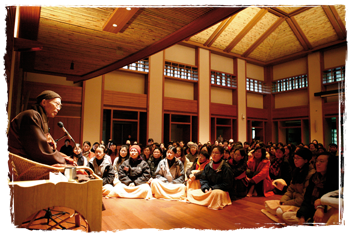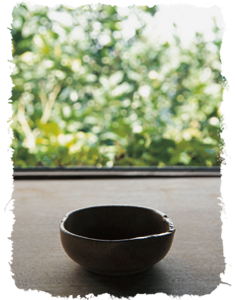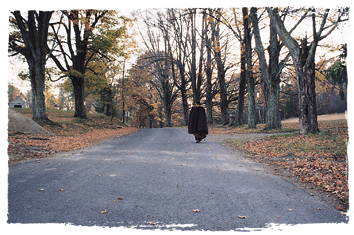The Origin of Dharma Drum Lineage of Chan Buddhism
◎ Master Sheng Yen
Chan Buddhism refers to the tradition we have inherited. This tradition is the meditation practice of the Chinese, or Han people. Over time the meditation practice of the Chinese underwent many changes, resulting in the five lineages and seven sects, while there are possibly even more. However, in the course of development and evolution, the fundamental principle taught by Shakymuni Buddha has never been given up. This principle refers to the teachings in the Dependent Origination Sutra and the Rice Stalk Sutra: perceiving dependent origination is perceiving the Dharma, and perceiving the Dharma is perceiving the Buddha.”
Our lineage carries on two traditions of traditional Chinese Chan: the Caodong and Linji lineages. All the major points I have propagated, introduced and guided in Taiwan, America, and other countries around the world, are inseparable from these two traditions.
These two traditions belong to the Chinese people and also represent teachings of the mainstream Chinese Buddhism, which is the Chan Buddhism. Among the many branches of Chan Buddhism, only these two lineages have remained mainstream teaching to this day, also spreading to Japan, Korea, and Vietnam. Although the teachings that spread to the West are mainly Japan Zen and Korean Son, however, these still originated in China, and are only slightly different because of the influence of respective national traits and cultural backgrounds.
In addition to inheriting and transmitting these two Chan traditions, I have also drawn on the teachings of Japan Zen, Korea Son, and Vietnam Thien, as well as the gradualistic methods of the Tibetan tradition and the Vipassana methods of the Theravada tradition. So I am moving on after reconstructing the traditional Chan of Chinese Buddhism. As new teachings were also incorporated besides inheriting traditional Chan, we established a new school, which we have called the Dharma Drum Lineage.
The special features of the Dharma Drum Lineage
In fact the Dharma Drum Lineage of Chan Buddhism is not my original creation. All I have done is to integrate the Chinese Chan of the past by retaining the better parts of the teachings of Chan monasteries in the eighteenth and nineteenth centuries, as well as absorbing all the strengths of the Chan teachings of the Sui, Tang, and Song dynasties, to be practiced within the Dharma Drum Lineage. Therefore the establishing of the “Dharma Drum Lineage of Chan Buddhism” is historically significant and incorporates all the unique features of Chinese Buddhism.

What then are the special features of Chinese Buddhism? Chinese Buddhism is able to embrace the merits of different nations and different cultures. While it adapts to different times, environments, and regional cultures, its principal concepts and practice methods remain unchanged. This is characteristic of Chinese Buddhism and Chan Buddhism, and this is why it is called “Dharma Drum Lineage of Chan Buddhism.”On the other hand, we apply and teach Chan accommodating to the needs of people in different areas. So, in Taiwan this takes the form of the Taiwanese Chan Buddhism, while in Western countries such as the United States and the United Kingdom, it takes the form of Western Chan Buddhism. Although the content and methods are slightly adjusted, they don’t run counter to the principles of the Dharma Drum Lineage. If they are in contradiction to these principles, they are not Buddhism. Therefore, the Dharma Drum Lineage of Chan Buddhism is both flexible and principled.
The Dharma Drum Lineage has inherited the teachings of Indian Buddhism, and is grounded in the foundation of Chinese Chan Buddhism, while referring to and absorbing the strengths of the major Buddhist traditions in the world. We can say it is a convergence of various traditions, which fully shows the inclusive and adaptive nature of Chinese culture.Therefore, we don’t reject any traditions or lineages, nor do we criticize their weaknesses, because so-called weaknesses are actually the result of local customs at a certain time, and so are not relevant to us. However, we have to be able to adapt to the environment of our times. This is the Dharma Drum Lineage of Chan Buddhism.
The content and approaches of the Dharma Drum Lineage

The content of my new teachings is the rearrangement of the traditional methods of Huatou and Silent Illumination. While retaining their unique approaches to sudden enlightenment, I have also articulated the gradual stages to these methods. In addition, I have divided the course of Chan practice into four stages: from a scattered mind, to a concentrated mind, to a unified mind, and finally to the realization of no mind. Within each of these stages there are more advanced levels and approaches to practice.
Chan practice begins from basic exercises to relax body and mind, and the goal is to ultimately achieve letting go of body and mind. It is not easy at first, so we need to use a method to practice. The methods we use include counting breaths, reciting the Buddha’s name, and explore Huatou, and silent illumination. These methods can help the mind settle, focus, become unified, and put down all inner and outer connections. In addition to sitting, there are several other ways to practice meditation, such as walking, standing, and reclining. We call these methods sitting meditation, walking meditation, standing meditation, and reclining meditation. Before and after sitting sessions we need to do exercises and massage our bodies.
“Wherever the body is, there the mind should be.” “When the hand is doing something, the mind should be doing that too.” “Focus on eating when eating, and focus on sleeping when sleeping.” This is the beneficial philosophy of “Chan in every day life” as advocated by the lineage masters of traditional Chinese Chan. Therefore, practice is not merely practicing sitting meditation, doing walking meditation, doing prostrations, or chanting the sutras in the Chan hall. Every place and every moment is the place and time for practice, be it daily activities such as eating, drinking, sleeping, getting up, working, and engaging in physical labor.
Actualizing the Dharma Drum Lineage of Chan Buddhism
The practice of Chan cannot be mastered all at once, because we have been living in a state of tension since our childhood, and so it is impossible to relax body and mind right away. So we should practice often in our daily life to allow our mind to settle down bit by bit from a state of confusion, and stress, so that we may experience the real world amidst our illusory lives.
It is very easy for our minds to be influenced by gain, loss, happiness, suffering, praise, defamation, compliment, and mockery, which are called the “eight winds”. Often our minds are contaminated and spoiled by fame, position, power, and improper desires. As a result, we find ourselves caught up in painful dilemmas, and struggle between moral senses and selfish desires, stuck between options. All of these pose a threat to our spiritual environment. We can use the concepts of Chan practice to tell ourselves to abide nowhere, as nothing is permanent, and seek only peace of mind instead of caring about material success or failure, gain or loss, and honor or disgrace. If we can further use the methods of Chan practice to relax our body and mind, be mindful of our bodily sensations and our thoughts, and take a further step to let go of our body and mind, then we can achieve a state where our minds will no longer be affected by any temptations or stimuli. This is the protection of spiritual environment.

Do not underestimate yourself. As long as you give rise to a thought that accords with compassion and wisdom, you are living in the pure land of your own inner world for that thought-moment. When we exert an influence on our family and the surrounding environment with such a spirit, a pure land will gradually come about, spreading throughout our Earth.
The goal that Dharma Drum Mountain strives to achieve is to purify people’s mind and society, to uplift the character of humanity, to improve the natural environment, to bring people peace of mind, and stability to society. Only in this way can we create a harmonious life and a world filled with peace and happiness. Therefore, if we understand how to protect our spiritual environment and apply the methods of Chan practice, we can also experience the spirit of the Dharma Drum Lineage of Chan Buddhism in our daily lives, even at times when we are not meditating in a Chan hall.